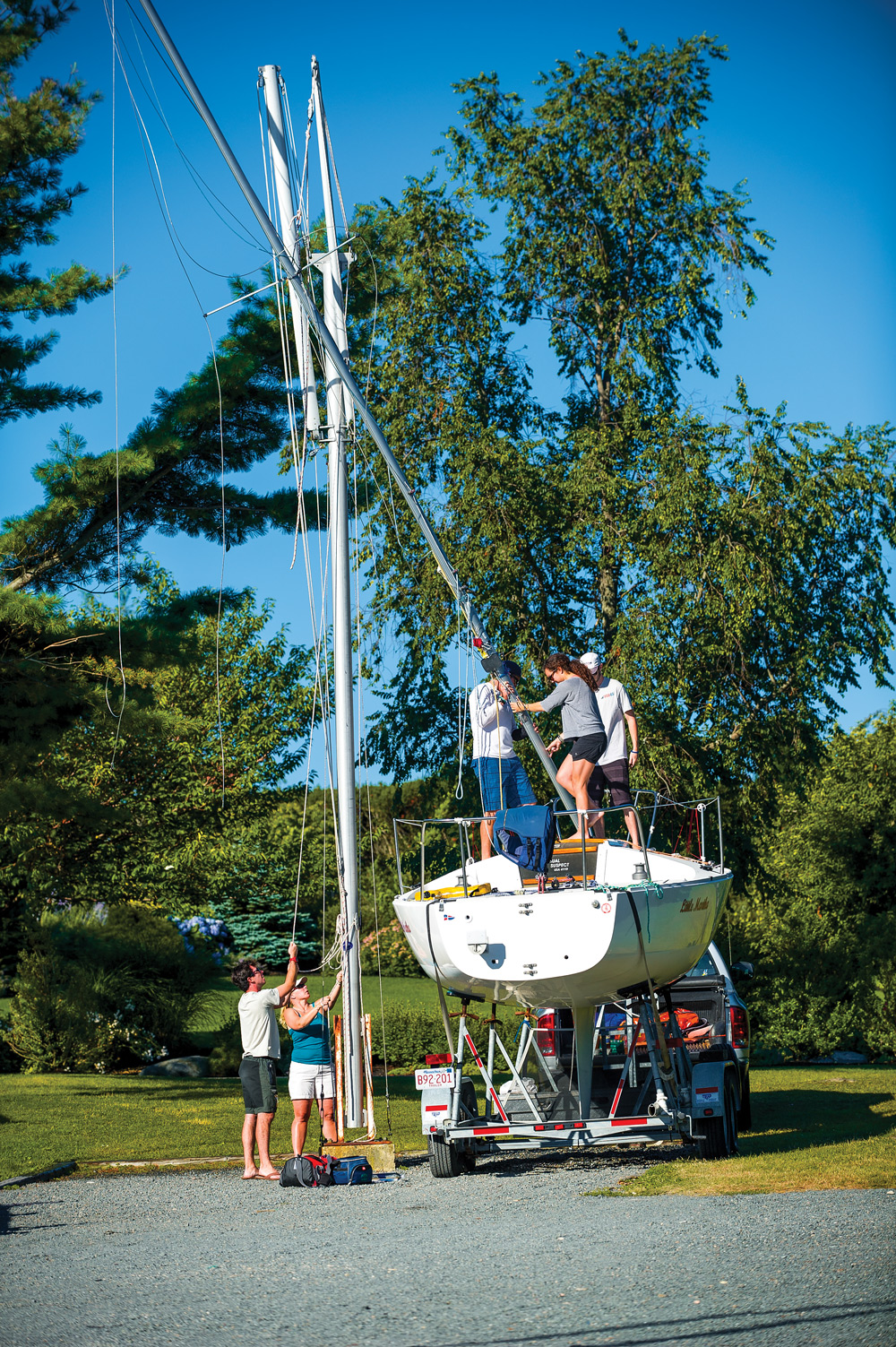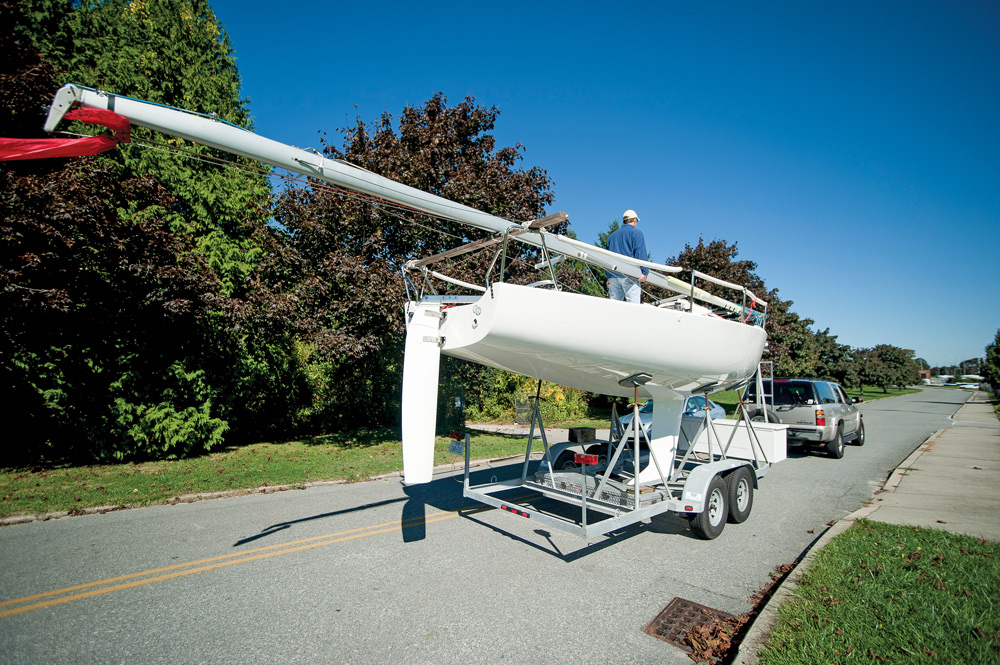Trailer maintenance
Get your boat where it’s going safely by keeping an eye on what hauls it
Some of the best adventures happen on trailersailers. On what other kind of sailboat can you explore far-off inland lakes, wide rivers or obscure bits of estuaries all in the same weekend? In fact, one of the only drawbacks to being a trailersailor is that you’ve just doubled your maintenance requirements: not only do you have to take care of the boat, you must take care of the trailer, so that it will take care of you.
Trailers are fairly simple technology but consist of electrical, suspension, braking and wheel components, not to mention the support and protection it gives your boat. I’ll take you through each system and give you tips on how to keep each system working at its best.

The maintenance requirements of your trailer will depend on your usage. A trailer that is just rolled across the boatyard a few times a year, between storage and the crane, will require less maintenance and preparation than one that travels across the country and is immersed in salt water.
In general, saltwater will corrode and destroy just about any mechanical system, but it’s hard to avoid if you sail in it. The best defense is keeping things clean. A freshwater rinse is a good start, but a salt removal product that removes saltwater residue and applies a layer of protection like Salt Away, used periodically, is even better.
Electrical
The electrical system on most trailers consists of lighting—brake lights and turn signals—but larger trailers have electric brakes too. Regardless of the system, the key is clean and dry electrical connections to keep the systems working. Obviously, submersion in salt water makes this step even more important.
Dielectric grease is your friend here. This clear light grease is great to use on connectors between the trailer and tow vehicle and light sockets. Grease the connectors a few times a year (more often in a saltwater environment), and the light sockets when you change bulbs. Speaking of bulbs, LED trailer bulbs now have a long life and are vibration resistant and cool, making them a worthwhile upgrade.
To maximize the life of your trailer lighting, a great tip is to disconnect your lighting connector just before launching. This prevents your lights from coming on underwater. Hot bulbs (even LED) and cold water don’t mix. Good trailer light seals help immensely, but this tip is still worthwhile.
For more permanent connections, like terminal strips, you can protect them with CorrosionX. This spray lays down a thin coating that keeps moisture away from the electrical connections.
Suspension
Trailers have suspension systems, typically leaf strings on the main axle. Little maintenance is required, but you should make sure that all the fasteners stay tight. Corrosion is the enemy too, your best defense is a good corrosion protection spray like CorrosionX on all surfaces and pivot points.
Braking
Brakes are a critical component, especially with larger and heavier boats. The typical system is a hydraulic surge brake system. As the trailer pushes up against the slowing tow vehicle, a hydraulic cylinder is compressed, forcing brake fluid to the trailer brakes, slowing the trailer. This is a purely mechanical system with a few maintenance points.
On the actuating side, it is important to keep the cylinder on the trailer tongue clean and lubricated. The pivot points should be lubricated with a good quality grease and the overall mechanism can be protected with CorrosionX. The system needs to be kept filled with brake fluid as well. There is typically a reservoir integrated into the actuating cylinder assembly.
There is a wheel cylinder with drum or disc brakes on each wheel. These brakes need to be treated a lot like brakes on your car, but they need to be maintained more often. The brake pads should be checked every 5,000 miles, and replaced as they wear. At inspection time, it is a good idea to lubricate any pivot points. As I mentioned earlier, keeping the brakes clean and salt free is key to long performance. Rinse them often.

Wheels and tires
The wheels on your trailer live a tough life, they support the full load of the boat and gear, run hot due to friction and braking forces and are plunged into cold water at launch time.
Basic maintenance is keeping everything clean and salt free. I mentioned freshwater rinsing and salt removal a few times, that is intentional.
When a hot wheel hub is immersed in water, it immediately cools causing a tiny vacuum inside the hub, drawing in water and grit. This intrusion of water will slowly destroy the hubs and bearings. There are two ways to solve this problem. The traditional approach is to repack the wheel bearings often, this keeps the hubs full of grease and cleans out any water and grit.
A better solution is the Bearing Buddy, a spring-loaded device that keeps a positive pressurized load of grease in the hub. With the grease under pressure, water isn’t allowed to enter the hub. The only maintenance involved is keeping the grease reservoir full.
Trailer tires are different than modern car tires. They are purpose-built with very stiff sidewalls to handle big loads. The result of this is that they don’t look bulgy when underinflated. You will need to check the pressure with a tire gauge for an accurate reading.
The tires likely won’t experience dramatic tread wear but it’s a good idea to check them. A good old-school method is the penny test—place a Lincoln penny into your tire tread, if the tread covers some of Lincoln’s head you are OK, if there is space showing, you need to replace your tires. For more technically minded folks, you need to maintain at least 1/16-inch tread depth, measure it how you like, but a penny is convenient. Even if they don’t wear out, tires do get old. Check often for dry rot, side wall cracking and other signs of damage.
Broken down into manageable steps, tailored to your usage, any maintenance tasks are made manageable. Get your trailer ready for the season and you’ll make sure you spend more time on the water than broken down on the side of the road.

Comments